Bringing people together through virtual dining experiences
In the past decade, video chat platforms have surged in popularity, especially during the 2020 pandemic. MunchMate taps into this trend by offering a unique social dining experience inspired by Mukbang videos. We connect people over shared meals, making dining a virtual and inclusive activity for everyone.
view presentationSkills Applied:
- Experience Design
- User Research
- Figma
- Interaction Prototyping
- User Surveys
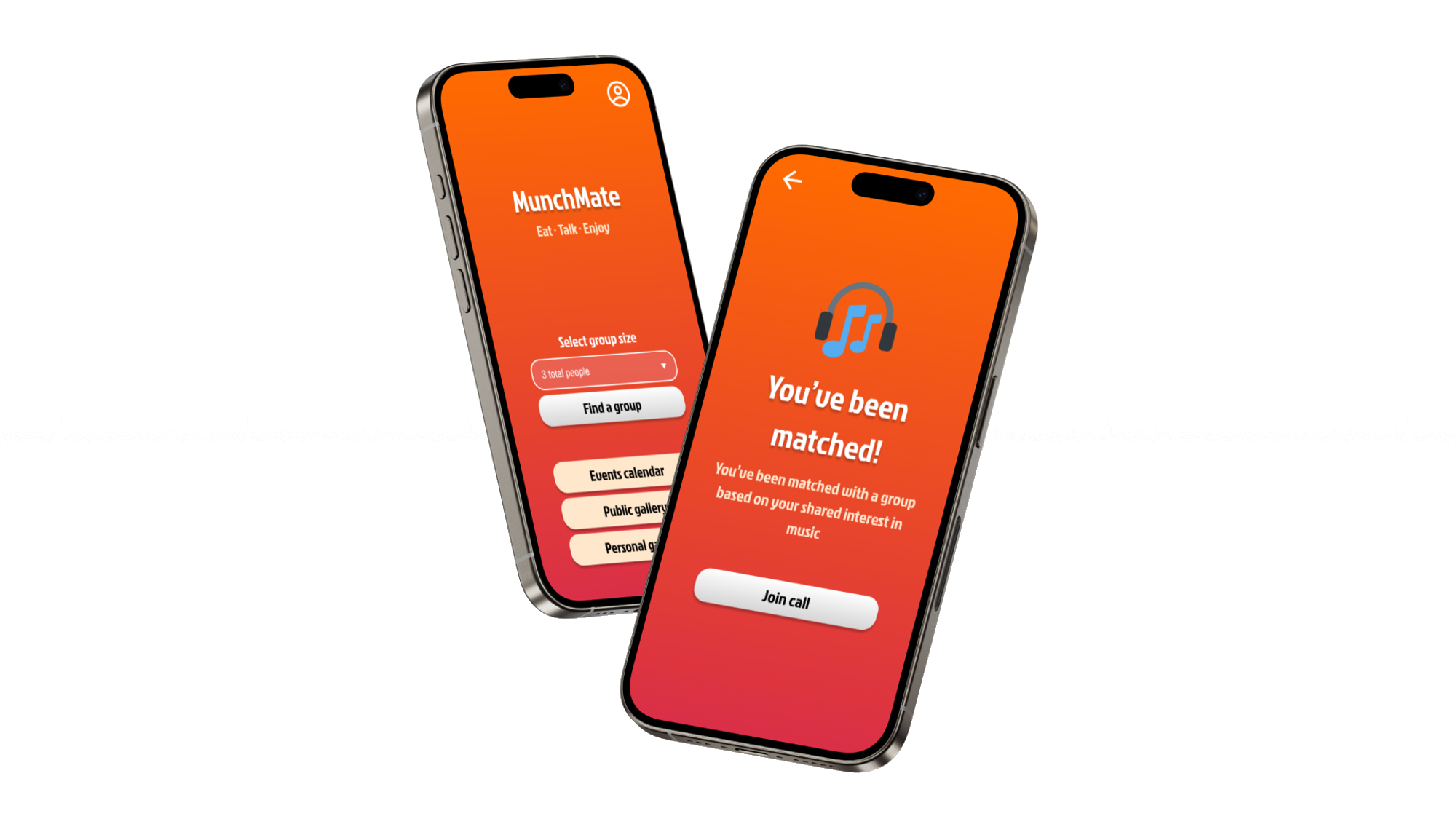
Background
What is Mukang?
Mukbangs are online videos where influencers consume copious amounts of food. Originating in South Korea, this trend has captivated audiences worldwide, fostering parasocial connections between viewers and influencers.

Research
User Research
Focused on social motivations for Mukbang viewership, we conducted literature review, survey, and competitive analysis to understand viewers' eating habits and motivations.
Literature Review
We learned that engaging in shared experiences via online video chat enhances connections, while online communities offer unity and belonging, even in solitary physical environments.
(View Literature Review)
Reasons for viewer engagement:
Entertainment
Social reward
Eating vicariously
Sexual pleasure
Alleviate stress
Survey
Conducted 11-questions survey: 4 on eating habits and 7 on Mukbangs, through r/UCSD, r/mukbang, UCSD Discords, and Instagram. 57 total responses.
The data indicates that eating with others enhances meal satisfaction.
(View survey responses)
16
respondents enjoys watching Mukbang
81%
of the 16: enjoys other's company while eating
94%
of the 16: does other activities while eating
Competitive Analysis
We analyzed the differences, concerns, and appeals in existing online video chatting platforms such as Omegle and Emeraldchat. Common concerns revolved around inappropriate behaviors, unfulfilling conversations, and issues with the matching systems.
However, people also use these platforms to search for connection with others and to address feelings of loneliness and isolation.
View Competitor Analysis

User & Social Setting
MunchMate's goal is to unite people through engaging virtual dining experiences. Munchmate considers users' motivations for watching Mukbangs and engaging in video chats, by providing companionship during meals and catering to those seeking connection. The app is designed to be used anytime, anywhere with a device and a comfortable setting.
The experience offers a fresh approach by moving away from one-sided parasocial connections with influencers and adopting interactive, interest-based matching. Personalized matching enable users connect with like-minded individuals, while community-driven events and features like public galleries and food events enrich the social dining experience.
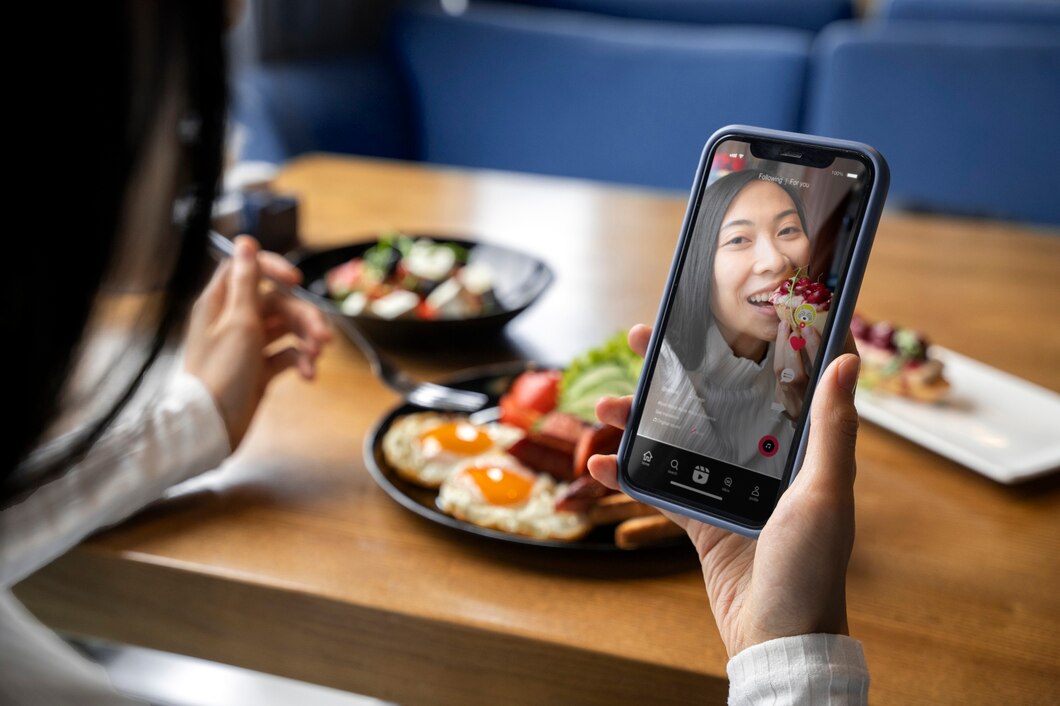
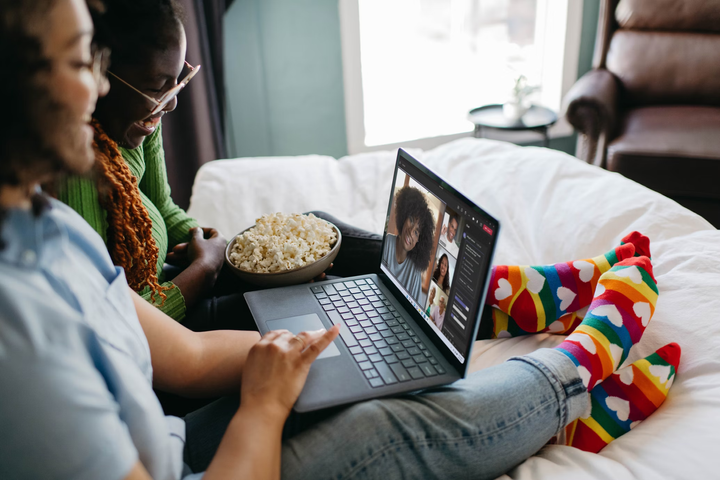
UI Design
Interface
The primary objective of this project was to assess the social usability of MunchMate, rather than the digital interactive prototype itself. The digital prototype functioned as a reference to uphold the core concept of the experience during the transition to social computing prototyping.





Video Call Page
- Standard video call options
- Interactive elements to facilitate conversation and joint activities
- The system conveniently displays dismissible suggestions, updates, and prompts at the bottom of the screen
Interaction Prototyping
Context
The social computing prototyping was conducted in a classroom with about 15 participants. Food was provided to simulate the eating experience, but participants could choose whether to eat or mime the experience.
Session 1
Discord's chat and call features were integrated with face-to-face interaction to replicate our app's interface during prototyping. This enabled us to evaluate the social aspects of our prototype, replicating MunchMate's conceptual mechanisms.
Before the session, users received an overview of MunchMate and instructions. They joined the Discord server and utilized the "matching-questionnaire" chat to answer questions using emoji reactions, sorting them by shared interests, akin to our app's algorithm.
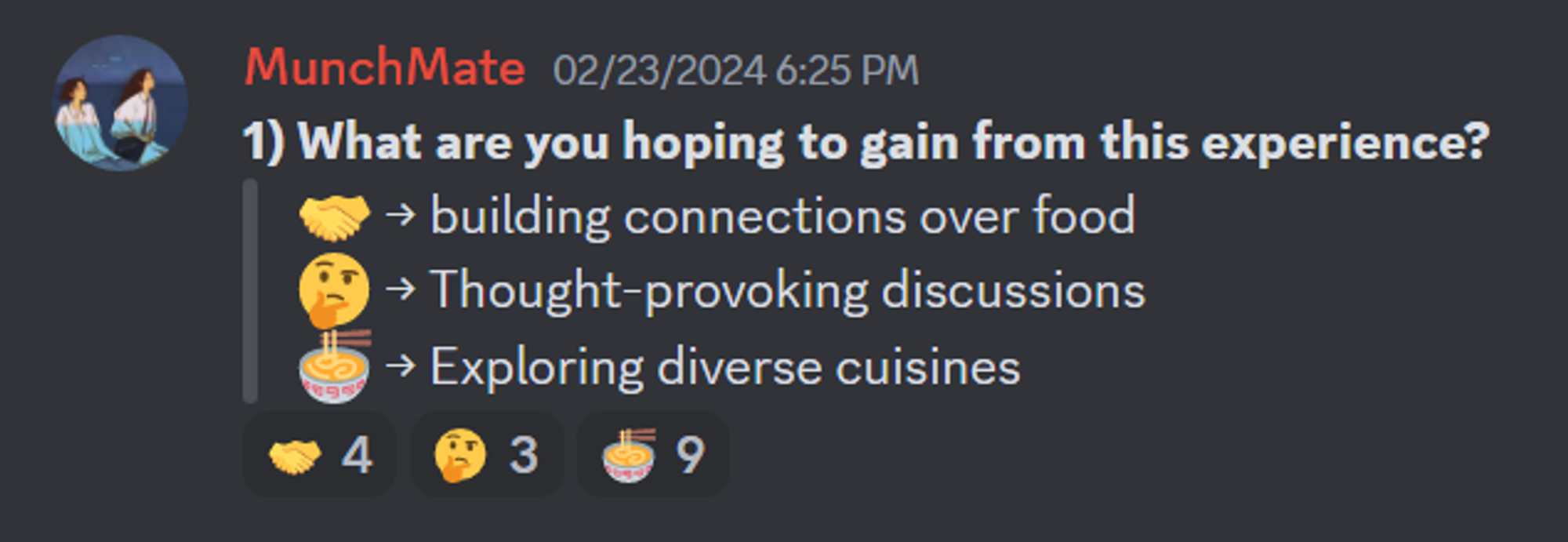
After answering matching questions, users transitioned to a waiting room on Discord and muted their microphones to prevent feedback. Acting as wizards, we manually matched individuals based on their answers to ensure common ground, forming five groups of 2 - 3 people each. Then, we assign each user to their respective room within their matched group.
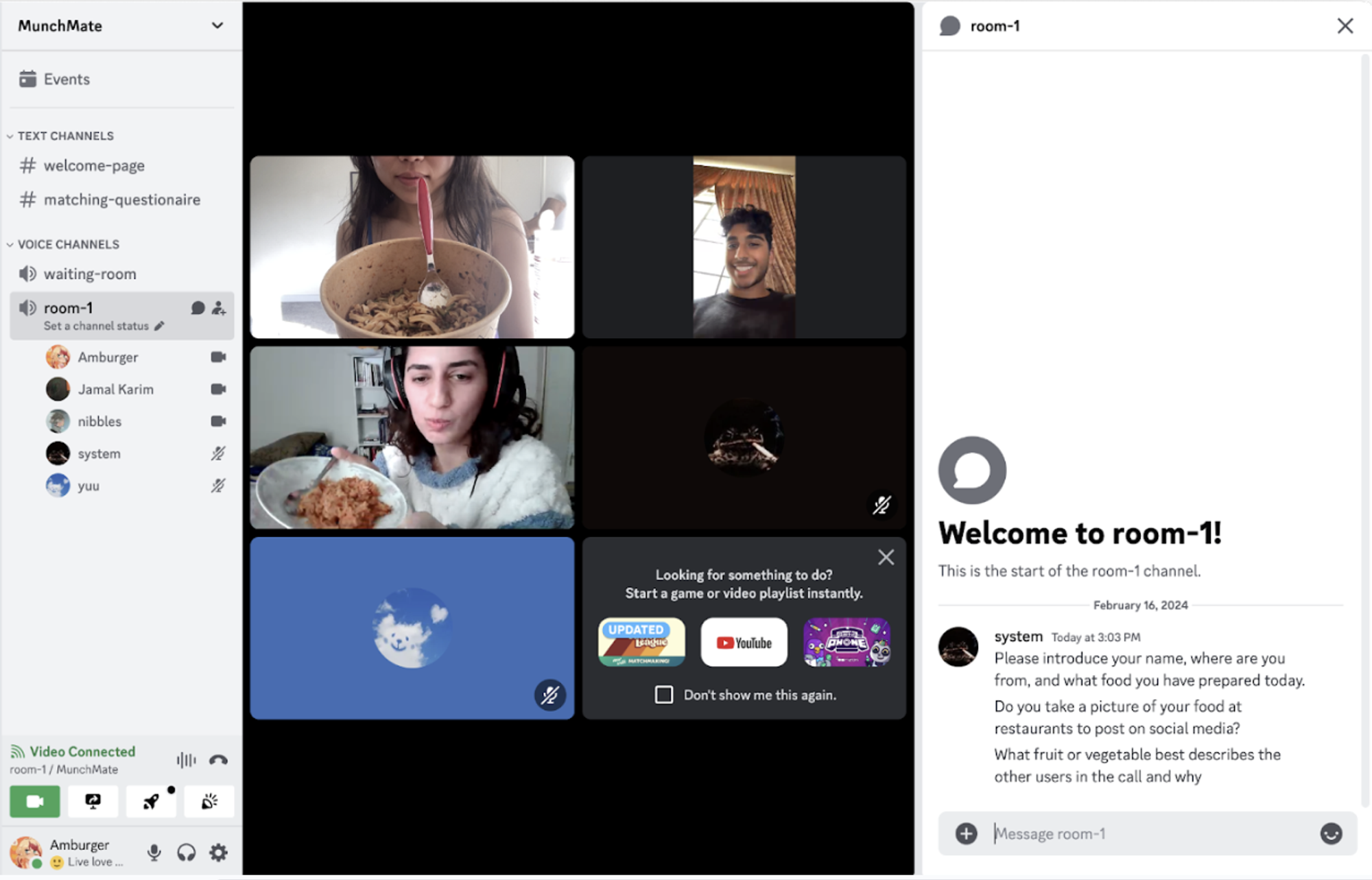
Once everyone is settled in their rooms, the video call starts. We requested users to have their cameras on for a more immersive experience, while still talking in person to avoid microphone feedback. As wizards, we sent system prompts and interface images in each room's chat channel to replicate MunchMate's interface. Users were prompted to type their chosen activity into the chat. Ice-breaker questions and movie clips were prepared in advance. While users are encouraged to lead their conversations, MunchMate offers activities to enhance the friendly dining experience.

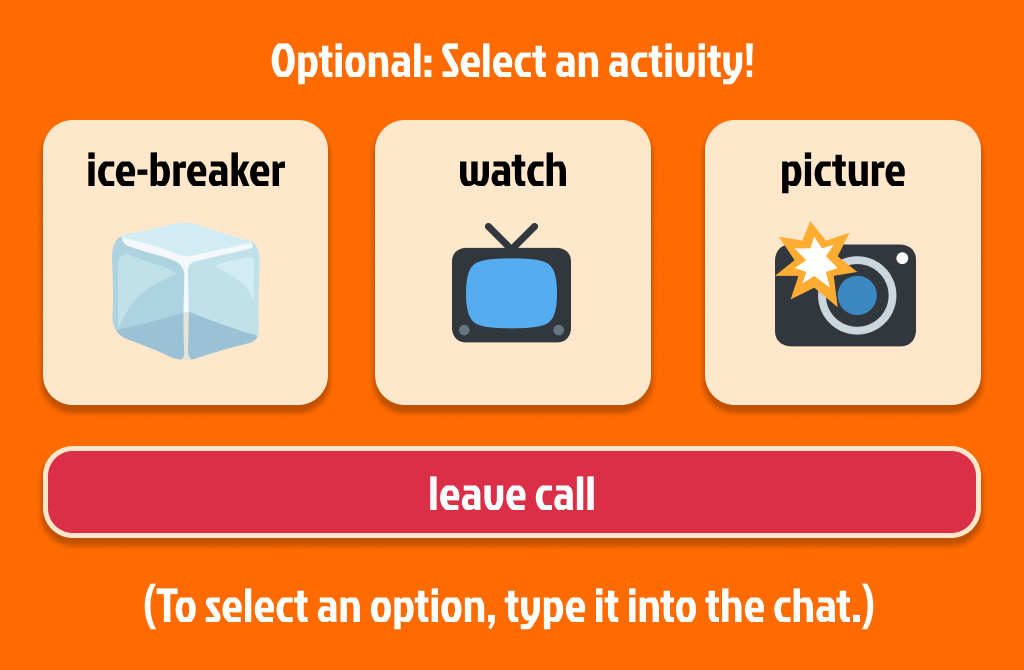
Session 1 Evaluation
Being matched by shared interests facilitated discussions as users could immediately engage in topics of mutual interest. Initial conversations often centered around these shared interests, enhancing interaction. One user found it easy to facilitate discussions based on matched topics. However, using Discord as an interface substitute was confusing, with users often forgetting to check for updates. Some found the typing interface cumbersome and unintuitive. Considering users are strangers, conversations in pairs felt awkward. Ice-breakers should be less intimate to alleviate discomfort.
(View Session 1 Feedback)
Session 2
Based on session 1 feedback, significant changes were made for session 2 of our social computing prototype, evident in the revised procedure. As in the previous session, we began with a modified overview of MunchMate's concept and instructions, tailored to incorporate our updates, before proceeding with the prototyping session.
In the second prototyping session, we simplified the prototype by removing Discord entirely. We found that users often forgot to use the Discord chat feature during interactions in our first session.
Instead, users will now answer matching questions through a Google form, a more intuitive and familiar format. The questions have been revised to better facilitate conversations between strangers, particularly around food topics.
(View Questionaire & Entries)
Next, users were matched based on common interests, with the number of groups reduced from five to three. This change aimed to create a less awkward initial meeting by providing a group setting rather than one-on-one. It also allowed for more input from individuals, enhancing conversational flow.
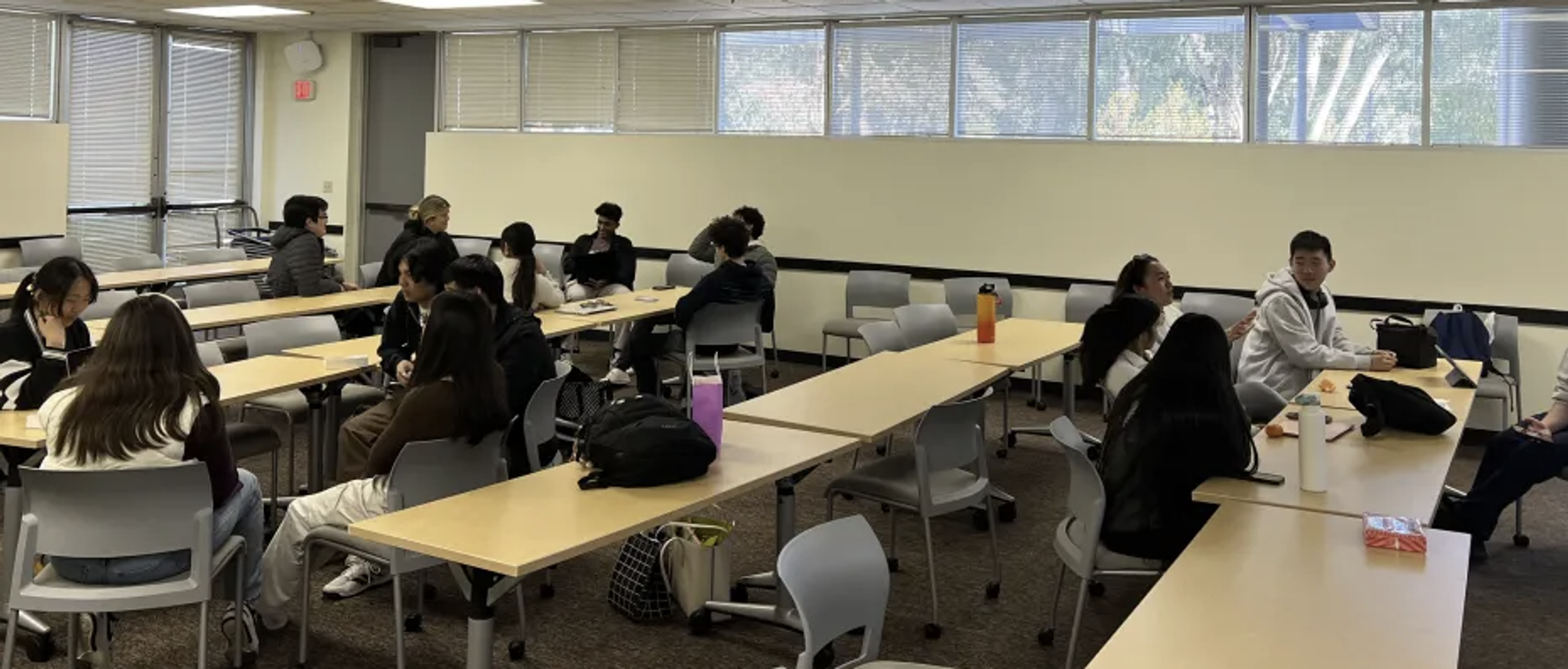
Once placed in groups and relocated to designated areas, users interact with the MunchMate interface via a phone held up by the wizard. An interactive Figma prototype displayed on the phone allows users to select features by pressing buttons, simulating the app experience during a video call. This replaces typing activity names into Discord's chat channel from session 1.
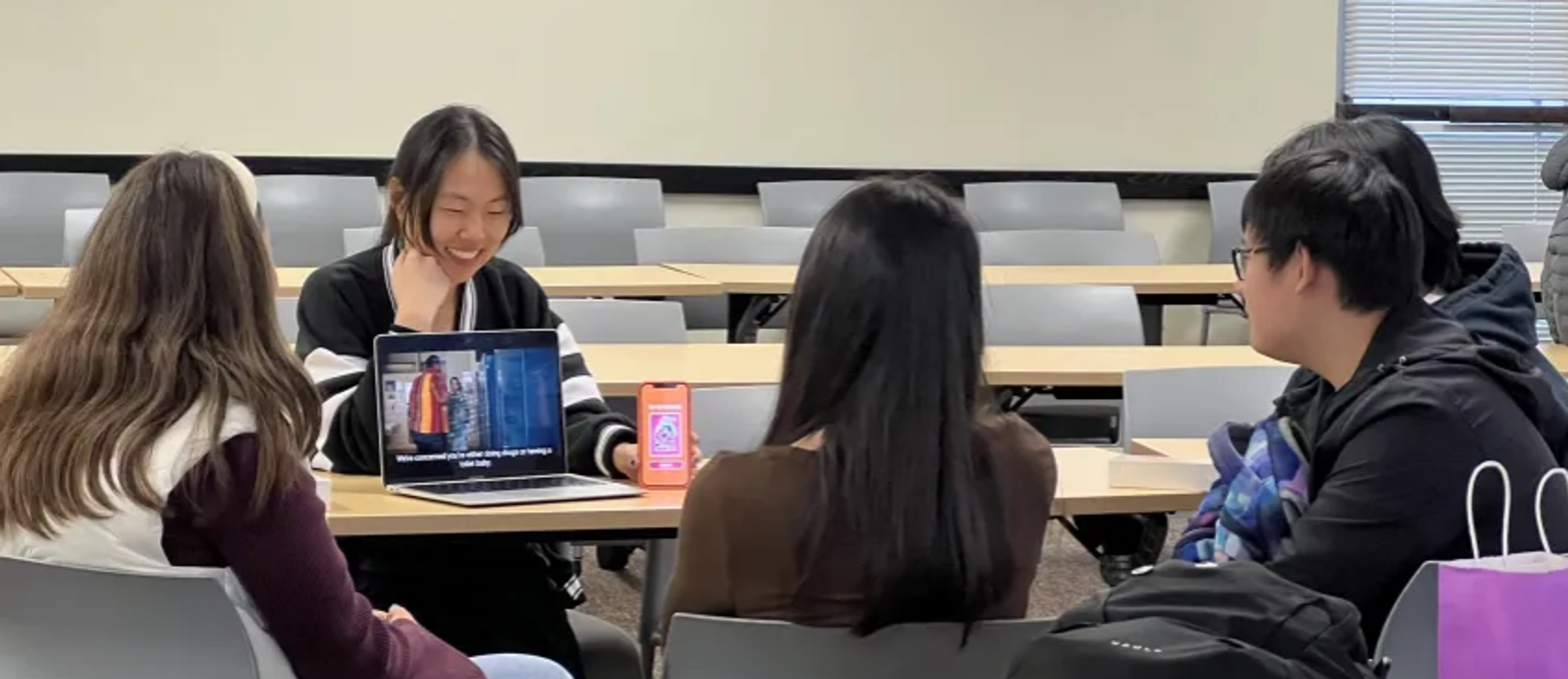
In summary, users can choose ice-breakers, watch something, karaoke, or take a picture. Choosing "watch something" or "karaoke" leads to another screen for further choices (refer to Figure 17). When not using the screen, users can converse face-to-face.
(Test Figma Prototype)
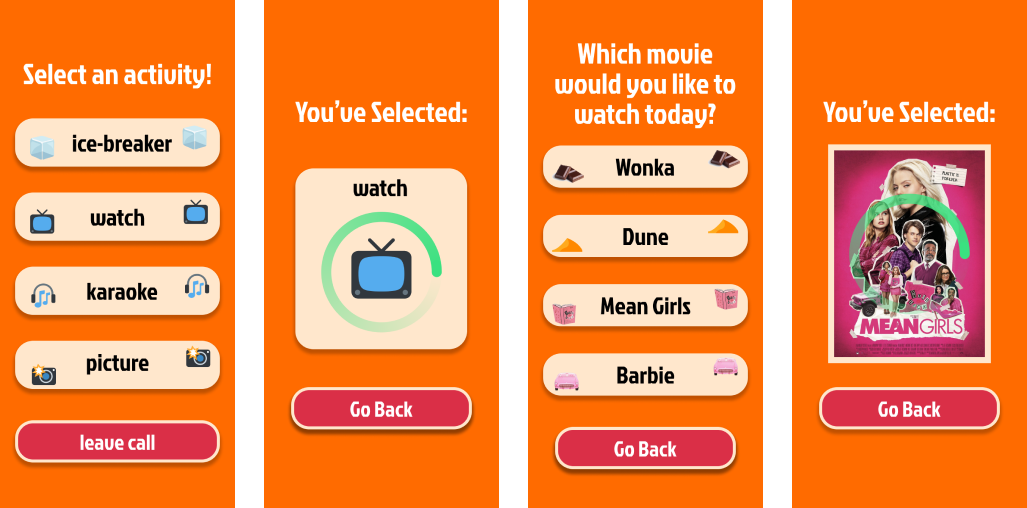
Session 2 Evaluation
As in session 1, we gathered feedback through a survey. Below are some new findings we synthesized.
(View Session 2 Feedback)
Overall, our new prototype significantly improved the clarity of MunchMate. Users consistently engaged with the interactive elements presented through a Figma prototype on our phones. Around 85% of users found the session 2 experience better than session 1.
Interestingly, the proportion of users who would ideally use MunchMate alone equals those who would prefer to use it with friends. However, despite most finding MunchMate easy to use, only about 39% expressed interest in using it themselves, suggesting a niche user base.
Similarly, most users indicated a reluctance to be photographed while eating, with many ignoring the photo feature.
While our social computing prototype has improved, it hasn't necessarily widened MunchMate's audience. We'll delve into the broader implications of these findings later.
"The iteration ran much smoother than last week and I liked it!"
"Great improvements the group setting is less intimidating"
"Every feature was straightfoward"
Conclusion
Bigger Picture Implications
As noted in the Interaction Prototype section, while our prototyping experience improved for users after iteration, the broader implications for the social setting of dining and Mukbangs go beyond the scope of MunchMate. In this section, we discuss our interpretations of these broader implications following our experience building and testing MunchMate.
Challenges
Throughout our project, we encountered challenges related to the social setting. Many people feel self-conscious about eating on camera and conversing, especially with strangers, making them unlikely to be interested in a niche product like MunchMate. Consequently, products like MunchMate may struggle to reach critical mass.
Potential
Despite these social challenges, MunchMate still holds potential. Our research suggests that virtual companionship while eating can be enjoyable when users bring friends along, reducing self-consciousness. Additionally, users seeking to build relationships could benefit from MunchMate. For the niche population interested in virtual two-way Mukbang interactions, tailored designs like MunchMate can offer a satisfying experience.
Limitations
Our project has limitations that could bias insights on both MunchMate and the overall social setting.
Firstly, our users for both prototyping sessions were peers from our social computing course. This familiarity might influence their responses and behaviors, potentially skewing the results. Moreover, because they participated in both sessions, they were already acquainted with MunchMate by the second session, possibly leading to biased experiences. Additionally, our peers may not represent MunchMate's target audience, limiting the diversity of insights.
Furthermore, all users were co-located in the same classroom, restricting our ability to simulate virtual connections authentically due to microphone feedback concerns. Additionally, replicating the eating experience was challenging, as not all users chose to eat, hindering our understanding of MunchMate's functionality during meals.
Moving forward, it's crucial to address these limitations and explore alternative ways to make MunchMate enjoyable for users who may not want to display themselves to strangers but still seek companionship while eating. Additionally, exploring how to maintain the laid-back nature of watching mukbangs while actively sharing one's life could be fruitful avenues for investigation.